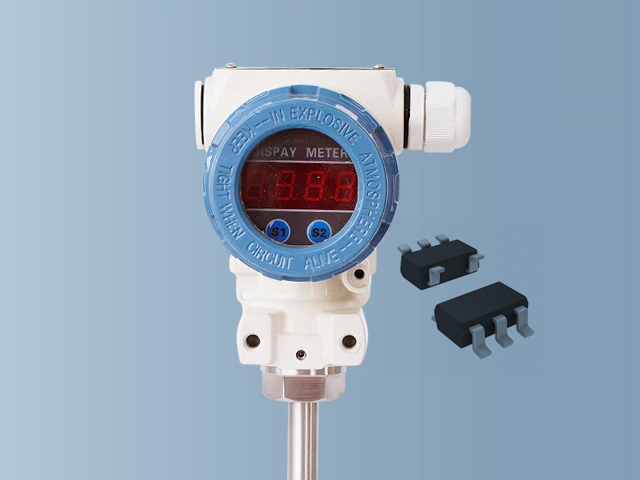Temperature transmitter is a device used to measure temperature and convert it into a standard signal output. It is widely used in industrial automation control, environmental monitoring, medical equipment and other fields. In the design and manufacturing process of temperature transmitters, chip selection is a crucial part. Different chips have different performance characteristics and application ranges, so the correct selection of chips is crucial to ensure the performance stability and reliability of the temperature transmitter. This article will introduce the chip types commonly used in temperature transmitters and the factors to consider during the selection process.

1. Temperature sensor chip
The temperature sensor chip is one of the most critical parts of the temperature transmitter. It is used to measure the ambient temperature and convert it into an electrical signal output. Common temperature sensor chips include:
- Thermistor (PTC, NTC): Thermistor is a sensor that uses the property of material resistance to change with temperature to measure temperature. The resistance value of NTC thermistor changes with temperature within a certain temperature range, while the resistance value of PTC thermistor changes with positive temperature coefficient. When selecting a suitable thermistor chip, factors such as temperature range, accuracy, and response time need to be considered.
- Thermocouple: A thermocouple uses two wires of different metals welded together to form a loop. When the welding points are at different temperatures, an electromotive force is generated to achieve temperature measurement. Thermocouples have the advantages of fast response and wide temperature range, and are suitable for temperature measurement in high temperature environments.
- The selection of temperature sensor chips needs to consider factors such as temperature range, accuracy, linearity, stability, and matching with other circuits.
2. Signal conditioning chip
The signal conditioning chip is used to process the signal output from the temperature sensor chip and perform amplification, filtering, linearization and other processing to ensure the stability and accuracy of the output signal. Common signal conditioning chips include:
- Operational amplifier (Op-Amp): An operational amplifier is an integrated circuit used to amplify and process analog signals. It is often used for signal amplification and filtering in temperature transmitters.
- Gain adjuster: used to adjust the gain of the sensor output signal to adapt to different measurement range and accuracy requirements.
- Analog-to-digital converter (ADC): An analog-to-digital converter is used to convert analog signals into digital signals for further processing by a microprocessor or digital signal processor.
3. Microprocessor chip
Some temperature transmitters need to have features such as intelligence and communication functions, which require the use of microprocessor chips. Microprocessor chips usually integrate functions such as CPU, memory, and communication interfaces, and can realize functions such as temperature data processing, storage, and communication transmission.
When selecting a microprocessor chip, factors such as processor performance, memory capacity, communication interface type, power consumption, and support of software development tools need to be considered.
4. Power management chip
Each chip in the temperature transmitter requires a stable power supply, so the power management chip is also an indispensable part. Power management chips usually include voltage regulator, battery management, power management and other functions to ensure that each chip works in a stable power environment.
When selecting a power management chip, factors such as input voltage range, output voltage stability, power efficiency, and overload protection need to be considered.
To sum up, the design of a temperature transmitter needs to consider the selection of multiple chips, and each chip has different performance characteristics and applicable scope. During the selection process, comprehensive considerations need to be made based on specific application requirements, cost budget, technical support and other factors to ensure the stable performance and reliability of the temperature transmitter.
If you need selection guidance, sample testing, procurement, BOM ordering, etc., please contact us via the following email address:

